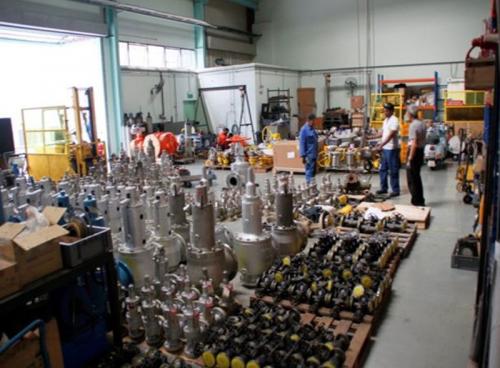SVS: Elevating Maritime Safety through Comprehensive Safety Valves Testing

In the expansive world of maritime operations, safety stands as the linchpin for the well-being of crews and the protection of valuable assets. Among the critical components ensuring this safety are safety valves, crucial in preventing overpressure scenarios in various maritime systems. This exploration delves into the crucial realm of safety valves testing, spotlighting SVS as a prominent player dedicated to rigorous testing procedures that uphold and enhance maritime safety.
Significance of Safety Valves:
Safety valves play a pivotal role in maintaining the stability and safety of vessels, preventing overpressure situations in vital systems like boilers, pipelines, and tanks. In the dynamic maritime environment, the proper functioning of safety valves is imperative to avert catastrophic failures, safeguarding both personnel and assets. Routine testing of these valves is not only a regulatory obligation but a proactive measure to ensure their reliability when it matters most.
Key Elements of Safety Valves Testing:
Pressure Testing: Fundamental to safety valves testing is subjecting them to simulated operating conditions, ensuring their ability to relieve excess pressure effectively. SVS employs advanced equipment to perform precise pressure tests, verifying functionality and compliance with safety standards.
Leakage Detection: Identifying and addressing potential leaks promptly is crucial for the effectiveness of safety valves. SVS utilizes state-of-the-art methods, including ultrasonic and visual inspections, to detect and rectify leaks. This meticulous approach guarantees the valves' integrity during real-world operations.
Set Pressure Verification: The accurate alignment of set pressure with specifications is paramount. SVS utilizes specialized equipment to verify and calibrate the set pressure of each valve, ensuring they operate within the designated safety parameters.
Lift and Seat Tightness Checks: Critical for proper operation, SVS conducts thorough checks to ensure the correct lift and seat tightness of safety valves. This process guarantees that the valves lift at the right pressure and reseat tightly, preventing backflow or residual pressure issues.
SVS: A Leading Force in Safety Valves Testing:
Commitment to Quality Assurance: SVS distinguishes itself through an unwavering commitment to quality assurance. Each safety valve undergoes a rigorous testing process, covering various parameters to ensure its reliability in real-world scenarios. This dedication positions SVS as a trusted partner in maritime safety.
Cutting-Edge Testing Facilities: SVS takes pride in its state-of-the-art testing facilities, equipped with the latest technology. From advanced pressure testing chambers to precision calibration tools, the company ensures safety valves undergo realistic conditions, replicating the challenges they may face during actual operations.
Adherence to Industry Standards: Compliance with international maritime safety standards is a non-negotiable aspect of SVS's operations. The company ensures that its safety valves testing procedures align with regulations set by classification societies and organizations like the International Maritime Organization (IMO), reflecting its commitment to upholding the highest safety standards globally.
The SVS Safety Valves Testing Process:
Thorough Inspection and Assessment: SVS initiates the testing process with a comprehensive inspection and assessment of each safety valve. This includes a visual examination, historical performance review, and an initial evaluation of the valve's overall condition.
Pressure Testing Simulation: The crux of SVS's testing procedure lies in the simulation of real-world conditions. Safety valves are subjected to controlled pressure environments, allowing SVS engineers to observe and verify their response to varying pressure levels.
Leakage Detection Techniques: SVS employs advanced techniques for leakage detection, ensuring that safety valves remain free from imperfections. Ultrasonic testing and visual inspections are conducted meticulously, leaving no room for potential leaks that could compromise the valve's functionality.
Calibration and Set Pressure Verification: Calibration of safety valves is a critical step in the testing process. SVS utilizes precision tools to calibrate the set pressure of each valve, verifying that it aligns accurately with the required specifications. This ensures that the valve responds precisely to the designated pressure thresholds.
-
Post Your Ad Here
Comments